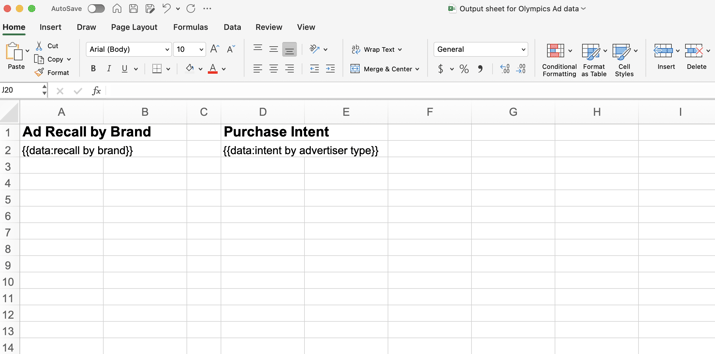Looker Studio, formerly Google Data Studio, is a low-cost, easy-to-use business analytics solution....
Export Looker Studio data to Excel or Google Sheets
Looker Studio is a leading BI tool that allows teams to create dynamic, interactive dashboards to solve business problems. However, while Looker Studio offers intuitive and collaborative tools to create and share dashboard visualizations, teams that receive Looker Studio dashboards often need access to the underlying data. This allows them to use and manipulate the data within the interface they prefer: spreadsheets.
To do this, business users usually need to convert Looker Studio data into a CSV file and manually copy and paste everything into a spreadsheet. The entire process is time-consuming, laborious, and error-prone. It’s also nearly unworkable when dealing with thousands of rows and columns of data.
But that doesn’t have to be the case. The following guide will demonstrate the best way to automate customized Looker Studio data exports with Slideform to get Looker Studio data and charts into spreadsheets.

Why Extract Data from Looker Studio?
Client-facing teams can enhance their analysis by leveraging Looker Studio data. Oftentimes, Looker Studio data is already transformed by the data or analytics team, and offers access to KPIs that are blended from multiple systems. Client-facing teams can make use of this robust, enriched data in reports and custom analysis.
However, most client-facing teams do not have the experience or permissions needed to work directly in Looker Studio. Furthermore, the data products associated with Looker Studio, typically dashboards and reports, do not offer easy access to underlying data.
In order to harness the underlying data, client-facing teams often extract the data in a CSV file format. But this process is highly manual and requires users to copy-and-paste the data directly into spreadsheets. In addition, the CSV export includes all data behind a chart, and the user often needs to further filter and refine this data. This process slows down sales and reporting efforts and leads to data errors. Finally, the CSV export is an unformatted data table that must be formatted with borders, colors, and headers before sharing with others.
Client-facing teams need a way to automate Looker Studio data exports into spreadsheet platforms such as Google Sheets and Excel. Read on to learn how client-facing teams achieve this with Slideform.
How to automatically pull Looker Studio data into a spreadsheet
- Connect your Looker Studio dashboard
- Create a spreadsheet to receive the data
- Match data to placeholders in the sheet
- Schedule the automation
1. Connect your Looker Studio dashboard
Slideform captures your entire dashboard and all elements (charts, KPIs, data tables, & filters) for use in reports, presentations, and spreadsheets. See all supported data sources.
To connect to your dashboard, in Slideform, go to Data Sources and click Add Data Source. Click Add Integration under Looker Studio. Then enter the dashboard URL.
In Looker Studio, you will also need to share the dashboard with share@slideform.co and enable embedding. In Edit mode, look at File > Embed Report. Make sure that the checkbox next to Enable Embedding is clicked On. Check out the Help Center for guidance on how to connect your dashboard.2. Create a spreadsheet template

With Slideform, you can specify filters and layout of the data and also pull data from different data sources into the same sheet!
Save the template, either as a Google Sheet in your Google Drive workspace, or as an Excel file. Then upload it to Slideform as a New Project.
3. Match data to placeholders in the sheet
The final step is to match each placeholder pragma to the appropriate data. Set the data source for each pragma in the Configure Data section of the project.
Slideform can do complex data filtering and lookups too! For more information see: How to Configure the Data Mapping. You can embed charts, text, images, numbers, percents and more from a variety of data sources. Save the data configuration once all pragmas are set.
4. Schedule the automation
Once the data and template are connected, you can trigger a data pull to the spreadsheet anytime by clicking Generate. Or you can set a schedule to run the exports and email you the results. In Settings you have the option to create a new output sheet each time, or to overwrite an existing Google Sheet.
With an automated workflow, you can pull in the data you need automatically for further analysis and manipulation. Add to the workflow by importing your spreadsheet data directly into reports and presentations.
Did you know? Slideform can insert data, charts, text, and images into your Google Slides and PowerPoint too!





